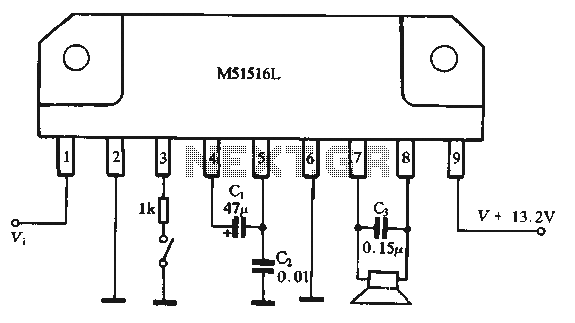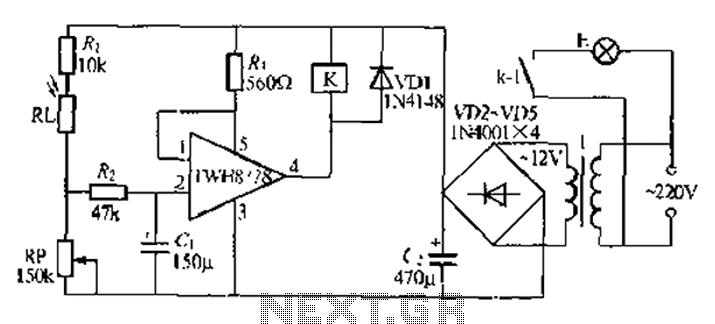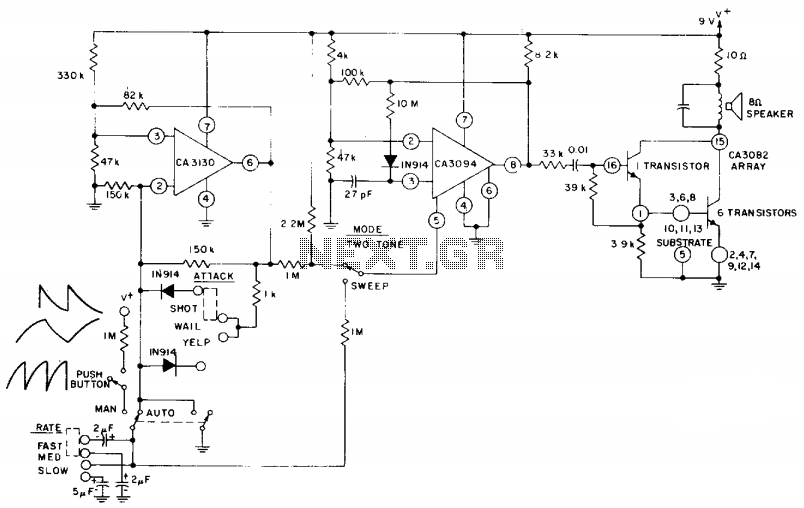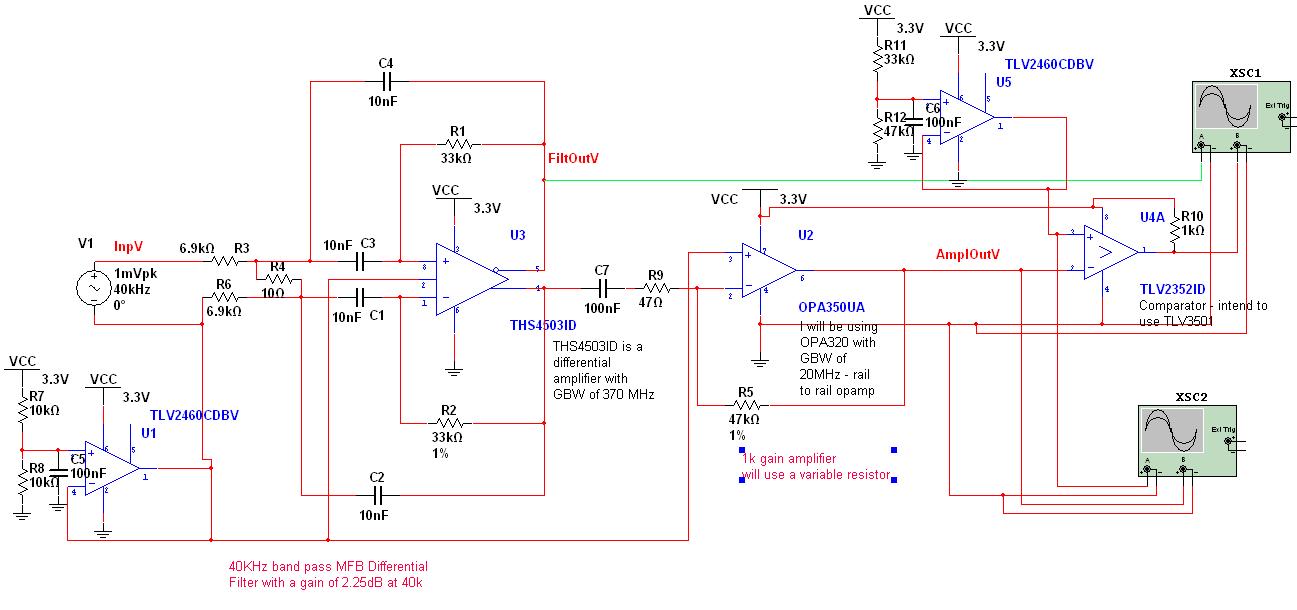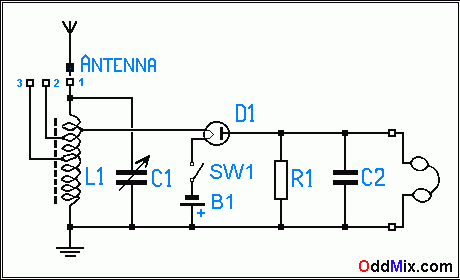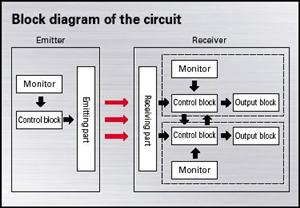
Simple Full-Wave Envelope Detector Circuit
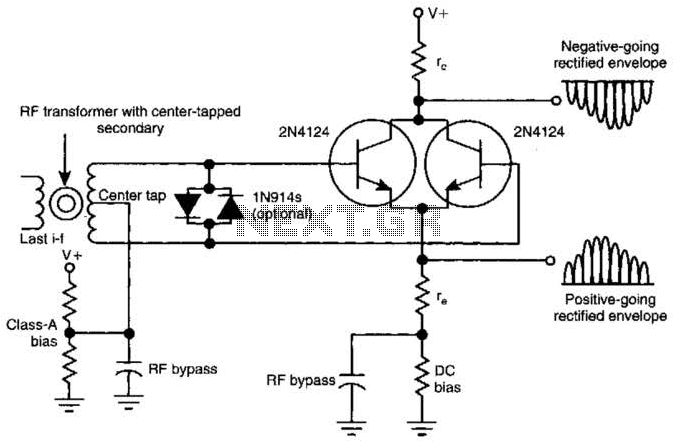
This amplifying full-wave detector circuit is simple yet sensitive, featuring an almost zero rectification threshold. It provides a highly linear RF load to the final IF stage. The gain for the collector output is approximately given by r jre, while the emitter output gain is slightly less than unity.
The amplifying full-wave detector circuit operates by employing a configuration that allows for the detection of radio frequency (RF) signals with high sensitivity. The circuit typically utilizes bipolar junction transistors (BJTs) or field-effect transistors (FETs) to achieve amplification and rectification of the input signal. The design minimizes the rectification threshold, enabling the detection of weak signals that might otherwise be lost in noise.
In this circuit, the collector output's gain is a critical parameter, often approximated by the expression r jre, where 'r' represents the resistance in the circuit and 'jre' denotes the reactive components that influence the gain at radio frequencies. This gain ratio indicates that the circuit can effectively amplify the RF signals before they are processed further by the intermediate frequency (IF) stage.
The emitter output, while slightly less than unity, still plays an essential role in maintaining the overall performance of the detector. The output characteristics of the emitter can be leveraged for applications requiring a lower signal level, ensuring that the circuit can interface with subsequent stages without introducing significant distortion.
The circuit's design should include proper biasing to ensure optimal operation of the transistors, along with filtering components to reduce noise and improve signal integrity. Additionally, the linearity of the RF load presented to the IF stage is crucial, as it allows for better performance in terms of signal fidelity and dynamic range.
In summary, this amplifying full-wave detector circuit is a vital component in RF applications, providing high sensitivity and linearity, making it suitable for various communication systems. Proper design and implementation of the circuit will enhance its effectiveness in detecting and amplifying RF signals. Simple, yet sensitive, this amplifying full-wave detector circuit has an almost zero rectification threshold. It presents a highly linear RF load to the final IF stage. The gain for the collector output is given (approximately) by r jre The emitter output gain is slightly less than unity. 🔗 External reference
The amplifying full-wave detector circuit operates by employing a configuration that allows for the detection of radio frequency (RF) signals with high sensitivity. The circuit typically utilizes bipolar junction transistors (BJTs) or field-effect transistors (FETs) to achieve amplification and rectification of the input signal. The design minimizes the rectification threshold, enabling the detection of weak signals that might otherwise be lost in noise.
In this circuit, the collector output's gain is a critical parameter, often approximated by the expression r jre, where 'r' represents the resistance in the circuit and 'jre' denotes the reactive components that influence the gain at radio frequencies. This gain ratio indicates that the circuit can effectively amplify the RF signals before they are processed further by the intermediate frequency (IF) stage.
The emitter output, while slightly less than unity, still plays an essential role in maintaining the overall performance of the detector. The output characteristics of the emitter can be leveraged for applications requiring a lower signal level, ensuring that the circuit can interface with subsequent stages without introducing significant distortion.
The circuit's design should include proper biasing to ensure optimal operation of the transistors, along with filtering components to reduce noise and improve signal integrity. Additionally, the linearity of the RF load presented to the IF stage is crucial, as it allows for better performance in terms of signal fidelity and dynamic range.
In summary, this amplifying full-wave detector circuit is a vital component in RF applications, providing high sensitivity and linearity, making it suitable for various communication systems. Proper design and implementation of the circuit will enhance its effectiveness in detecting and amplifying RF signals. Simple, yet sensitive, this amplifying full-wave detector circuit has an almost zero rectification threshold. It presents a highly linear RF load to the final IF stage. The gain for the collector output is given (approximately) by r jre The emitter output gain is slightly less than unity. 🔗 External reference
Warning: include(partials/cookie-banner.php): Failed to open stream: Permission denied in /var/www/html/nextgr/view-circuit.php on line 713
Warning: include(): Failed opening 'partials/cookie-banner.php' for inclusion (include_path='.:/usr/share/php') in /var/www/html/nextgr/view-circuit.php on line 713
